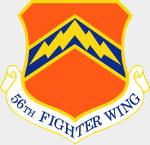Hobby Master HA2902 USAF Douglas A-1J Skyraider Attack Aircraft - 602nd Special Operations Squadron "Firefly", 56th Special Operations Wing, Thailand, 1969 (1:72 Scale)
"Sandy Low Lead, Sandy Low Lead, this is Cole, - - . I'm done, Sandy. I'm all screwed up. My back's broken. They're everywhere. I'm sitting on a ZSU. They're using me for bait. Do it, Sandy. Lay it in on me, man. I'm popping smoke."
- Willem Dafoe playing the part of Lt. Cmdr. Virgil 'Tiger' Cole, calling in an air strike on his own position, from the feature film 'Flight of the Intruder'
 The Douglas A-1 (formerly AD) Skyraider was an American single-seat attack bomber of the 1950s, 1960s and early 1970s. A propeller-driven anachronism in the jet age, the Skyraider had a remarkably long and successful career well into the space age, and inspired a straight-winged, slow-flying, jet-powered successor which is still in front line service today, the A-10 Thunderbolt II (Warthog).
The Douglas A-1 (formerly AD) Skyraider was an American single-seat attack bomber of the 1950s, 1960s and early 1970s. A propeller-driven anachronism in the jet age, the Skyraider had a remarkably long and successful career well into the space age, and inspired a straight-winged, slow-flying, jet-powered successor which is still in front line service today, the A-10 Thunderbolt II (Warthog).
It was operated by the United States Navy (USN), the U.S. Marine Corps (USMC) and the United States Air Force (USAF), and also saw service with the British Royal Navy, the French Air Force, and the Air Force of the Republic of Vietnam (VNAF), among others.
The piston-engined A-1 was designed during World War II to meet requirements for a carrier-based, single-seat, long-range, high performance dive/torpedo bomber, and was a follow-on to earlier dive bombers and torpedo bombers used by the Navy such as the Helldiver and Avenger. Designed by Ed Heinemann of the Douglas Aircraft Company, prototypes were ordered on July 6th, 1944, as the XBT2D-1. The XBT2D-1 made its first flight on March 18th, 1945, and in April 1945, the USN began evaluation of the aircraft at the Naval Air Test Center (NATC). In December 1946, after a designation change to AD-1, delivery of the first production aircraft to a fleet squadron was made to VA-19A.
The AD-1 was built at Douglas' El Segundo plant in Southern California. In his memoir The Lonely Sky, test pilot Bill Bridgeman describes the routine yet sometimes hazardous work of certifying AD-1s fresh off the assembly line (quoting a production rate of two aircraft per day) for delivery to the U.S. Navy in 1949 and 1950.
The low-wing monoplane design started with a Wright R-3350 radial engine, later upgraded several times. Its distinctive feature was large straight wings with seven hard points apiece. These gave the aircraft excellent low-speed maneuverability, and enabled it to carry a tremendous amount of ordnance over a considerable combat radius and loiter time for its size, comparable to much heavier subsonic or supersonic jets. The aircraft is optimized for the ground-attack mission and is armored against ground fire in key locations. This was unlike faster fighters adapted to carry bombs such as the F4U Corsair or P-51 Mustang, which would be retired by U.S. forces long before the 1960s.
Navy A-1s were initially painted dark blue, but during the 1950s following the Korean War, the color scheme was changed to gray and white. Initially using the gray and white Navy pattern, by 1967 the USAF began to paint its Skyraiders in a camouflaged pattern using two shades of green, and one of tan.
Used by the USN over Korea and Vietnam, the A-1 was a primary close air support aircraft for the USAF and VNAF during the Vietnam War. The A-1 was famous for being able to take hits and keep flying. Battle damage images from the Korean and Vietnam wars speak for themselves. There was added armor plating around the cockpit area for added pilot protection. It was replaced in the early 1970s by the A-4 Skyhawk as the Navy's primary light attack plane.
Pictured here is a 1:72 scale replica of a USAF Douglas A-1J Skyraider attack aircraft that was attached to the 56th Special Operations Wing, then operating out of Thailand during 1969.
Sold Out!
Dimensions:
Wingspan: 8-1/4-inches
Length: 7-inches
Release Date: April 2010
 Historical Account: "In Support" - The 56th Special Operations Wing performed combat in Southeast Asia from April 1967 - August 1973, and combat support until June 1975, employing a wide variety of aircraft to meet specialized missions. Those missions included interdiction, psychological warfare, close air support, search and rescue, forward air control, training Thai and Laotian air forces, and helicopter escort for clandestine insertion and extraction of personnel in Laos and North Vietnam.
Historical Account: "In Support" - The 56th Special Operations Wing performed combat in Southeast Asia from April 1967 - August 1973, and combat support until June 1975, employing a wide variety of aircraft to meet specialized missions. Those missions included interdiction, psychological warfare, close air support, search and rescue, forward air control, training Thai and Laotian air forces, and helicopter escort for clandestine insertion and extraction of personnel in Laos and North Vietnam.
During the sieges of Khe Sanh from February - April 1968, and Lima Site 85 from January - March 1968 where it provided close air support. Wing elements participated in the Son Tay Prison raid on 21 November 1970 and continued combat in Vietnam until mid-January 1973, in Laos until February 22nd, 1973, and in Cambodia until August 5th, 1973.
The 56th assisted in the evacuations of Phnom Penh on April 11th, 1975, and Saigon on April 29th-30th, 1975. During the SS Mayaguez rescue operation on May 15th, 1975, it provided forward air control and helicopter insertion/extraction support.







